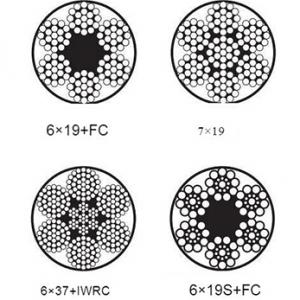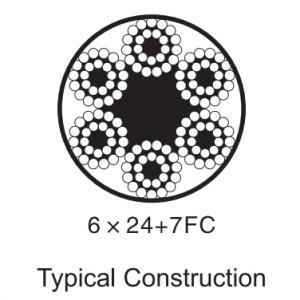Two types of single point mooring systems
Single point mooring refers to a mooring and operating device that provides a connection between the submarine pipeline and the moored vessel (offshore floating oil and gas processing and storage device, oil tanker, etc.) for the transport of fluid cargo. The single point mooring device is referred to as single point mooring, English "Single Point Mooring", referred to as "SPM". It was developed with the early production of offshore fields and the development of marginal fields.
The single point mooring lines are manufactured to OCIMF standards.
The Single Point Mooring Storage Tanker consists of two parts: a single point mooring buoy and an oil storage barge.
The single point mooring buoy is fixed on the seabed with 4~8 anchor chains. There are turntables and rotary seal joints on the buoy. The oil storage barge is connected with the turntable of the single-point buoy by a wire rope or a steel arm, which can be rotated 360 degrees, like a weather vane, to keep it in the position with the least force. Crude oil enters the oil storage barge from the submarine pipeline through the rotary seal joint at a single point; the oil tanker loads oil from the oil storage barge and transports it out.
The world's first single-point mooring buoy was commissioned in 1959 at the Port of Deetio in Sweden as a deep-water oil transfer terminal. In 1974, the steel arm single-point mooring oil storage device was developed, and the A-shaped steel frame was used to replace the wire rope connection, which avoided the collision between the oil storage barge and the buoy, and reduced a lot of maintenance work. In 1980, the first floating production, storage, loading and unloading system was installed in the Philippine waters. Oil and gas processing, storage and export can be performed on this system. In November 1981, a mild steel arm connection was developed, which was designed and installed in the offshore oil field of the Philippines, suitable for shallow water and harsh sea conditions. The single-point mooring device is simple in structure, low in cost, suitable for large water depth, and develops rapidly. More than 200 single-point mooring devices have been put into use. But there are no examples of such devices being used in icy waters.
Single Point Mooring Offloading Tanker The single point mooring oil tanker does not need to call at the port, but a floating single point oil unloading device is set up in sufficient water depth offshore, through the buoy floating on the sea and laying Pipelines on the seabed that connect to onshore storage systems that unload oil to shore. Single-point mooring and unloading oil tankers are mainly divided into three types: 150,000-ton, 250,000-ton and 300,000-ton. (Comparative advantage: Since there is no deep-water port, the entry of crude oil is greatly restricted by transportation conditions and costs.) The traditional method of unloading oil at a fixed terminal is: oil tankers enter the port to berth, and unload oil to shore through pipelines. Compared with fixed docks, it has the advantages of low receiving and unloading costs, safe operation, and loose berthing and unberthing conditions.
Single point mooring line (nylon double braided line) SPM (Double Braided Nylon rope)
Overview - General Description
The single point mooring line (also called SPM) is a circular double braided structure, which is an innovative design with higher strength, better wear resistance and more Long service life.
The eye loops at both ends of the cable have metal loops. The rope around the loop needs to be covered with a polyester fiber braided sheath (the thickness of the sheath is not less than 6 mm), and then coat a layer of polyurethane glue on the outer layer of the rope. To increase the wear resistance of the cable. The cable starts to be installed with float pipes 25 feet from the collar, and the number of float pipes must meet the specified requirements.





